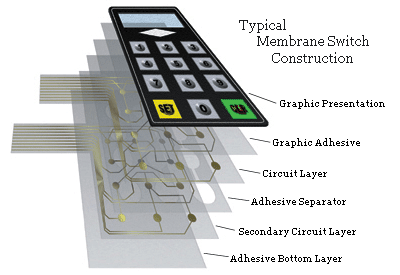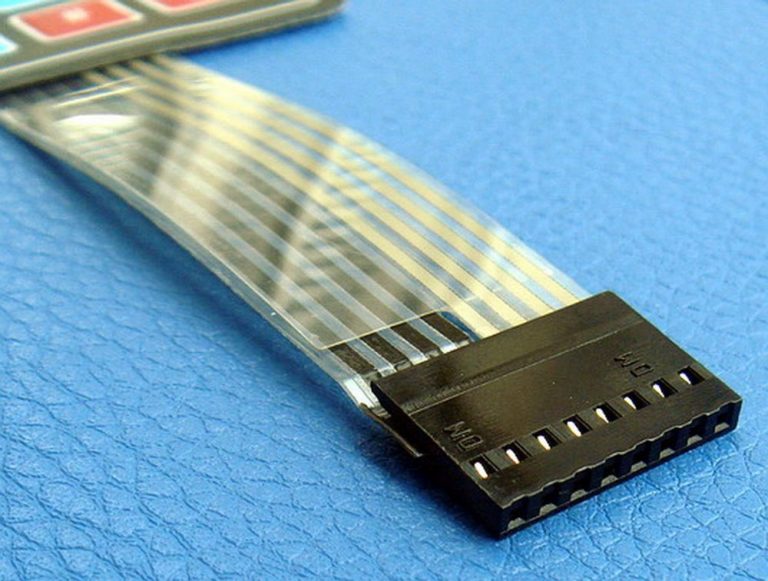Choosing the Right Membrane Switches for Your Product’s Needs
Choosing the Right Membrane Switches for Your Product’s Needs
Blog Article
Discover Just How Membrane Switches Function and Their Role in Modern Electronic Devices
Membrane Switches stand for an innovative integration of innovation and design within the world of contemporary electronic devices, serving as necessary interfaces in many gadgets. Recognizing the intricacies of Membrane switch capability and their more comprehensive implications in enhancing user experience welcomes more expedition into their style, benefits, and the ingenious advancements shaping their future in modern technology.
What Are Membrane Switches?

Membrane buttons are identified by their sturdiness and resistance to environmental aspects, such as dirt, dampness, and severe temperatures. They can be personalized with numerous graphics, colors, and responsive feedback alternatives, improving individual experience while preserving aesthetic charm - membrane switches. Additionally, the unification of printed circuits enables seamless integration right into tools, improving general functionality.
The flexibility of Membrane buttons is evident in their capability to support both straightforward and intricate control features. They can include functions such as LED signs and touch-sensitive innovation, satisfying details customer needs. As technology remains to evolve, Membrane Switches remain necessary for making it possible for efficient and user-friendly individual interfaces, therefore playing a pivotal duty in the improvement of modern-day digital gadgets.
Parts of Membrane Switches
Membrane buttons are composed of numerous vital parts that collaborate to produce a dependable and functional user interface. The primary components consist of the visuals overlay, glue layer, spacer layer, and conductive traces.
The graphic overlay works as the interface, normally published on a versatile substrate such as polyester or polycarbonate. This layer not just offers visual allure yet also consists of tactile responses, aesthetic cues, and protective features. Beneath the graphic overlay lies the glue layer, which safeguards the button to the gadget and ensures resilience versus environmental tensions.
The spacer layer is essential for keeping the needed space in between the graphic overlay and the circuit layer. When pressure is used, this void permits for the activation of the switch. The conductive traces, usually made from silver or carbon, form the electrical paths that finish the circuit when the switch is engaged.
In addition, a backing layer might be consisted of for architectural support and insulation. These parts team up perfectly, ensuring that Membrane buttons are both straightforward and resilient, making them important in various modern digital applications.
Just How Membrane Switches Work
Exactly how do Membrane Switches function properly within digital devices? Membrane Switches operate the principles of pressure-sensitive modern technology, making use of a layered building and construction that includes graphic overlays, adhesive layers, and conductive elements. When an individual uses pressure to the switch, the leading layer warps, allowing the conductive elements below to make contact and finish an electrical circuit. This action causes the preferred function within the tool.
The style of Membrane buttons is important for their effective procedure (membrane switches). The layers are thoroughly engineered to supply tactile comments, sturdiness, and resistance to environmental elements such as wetness and dust. The incorporation of domes-- small, raised locations within the button-- boosts tactile response, supplying users with an obvious click experience upon activation
Moreover, Membrane switches can be customized in terms of dimension, form, and graphics, making them suitable for different applications. They are often used in control panels, clinical tools, and consumer electronics because of their streamlined design and integrity. Overall, the effective performance of Membrane switches is crucial in improving customer communication and guaranteeing smooth operation in contemporary digital tools.

Applications in Modern Tools
Utilizing their unique style and performance, Membrane buttons have become essential elements in a large range of modern electronic devices. These versatile interfaces are utilized in customer electronics, industrial devices, medical gadgets, and automobile controls, offering seamless individual interaction.
In consumer electronics, Membrane buttons are commonly located in devices like microwaves, cleaning devices, and other household gadgets, where they make it possible for user-friendly control with a sleek account. Their low-profile layout promotes assimilation into portable gadgets, improving aesthetic charm without jeopardizing performance.
In industrial applications, Membrane Switches serve as control panels for machinery, supplying durability and resistance to severe atmospheres. Their capability to stand up to dampness and pollutants makes them suitable for use in manufacturing and processing markets.
Clinical devices additionally take advantage of Membrane buttons, which are developed to be very easy to tidy and preserve, guaranteeing hygiene in professional setups. They are typically used in analysis equipment, individual monitoring systems, and mobile medical tools, where dependability is extremely important.
Benefits of Membrane Switches
Among the vital advantages of Membrane switches is their convenience, which enables them to be customized for a variety of applications throughout multiple industries. These buttons can be made in different forms and sizes, fitting special item requirements while offering seamless assimilation right into tools. Their slim account enables a portable and sleek layout, typically enhancing the visual appeal of electronic items.
One more substantial benefit is their toughness - membrane switches. Membrane buttons are usually immune to dirt, moisture, Get More Info and chemicals, making them perfect for rough settings. This resilience extends their lifespan compared to traditional mechanical buttons, minimizing the demand for regular replacements
In addition, Membrane Switches deal cost-effectiveness. The production process involves printing innovations that reduce production costs, specifically for large runs. This affordability, incorporated with reduced maintenance requirements, makes them an appealing alternative for makers.

Conclusion
In conclusion, Membrane Switches stand for a significant advancement in customer interface innovation within modern electronics. As the need for durable and user-friendly user interfaces continues to grow, the duty of Membrane switches in forming individual experience will most certainly expand.
Membrane Switches represent a sophisticated assimilation of innovation and design within the world of modern-day electronics, offering as important user interfaces in many tools.In the world of contemporary electronics, look at this site Membrane Switches offer as vital elements that promote individual interaction with gadgets. As technology proceeds to progress, Membrane Switches stay important for enabling efficient and user-friendly individual interfaces, thereby playing an essential function in the innovation of contemporary electronic gadgets.
Exactly how do Membrane Switches feature efficiently within electronic devices? Generally, the efficient performance of Membrane switches is pivotal in improving user interaction and Read Full Article making sure seamless procedure in modern-day digital devices.
Report this page